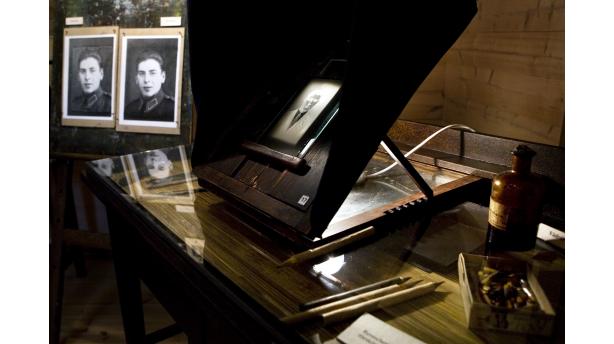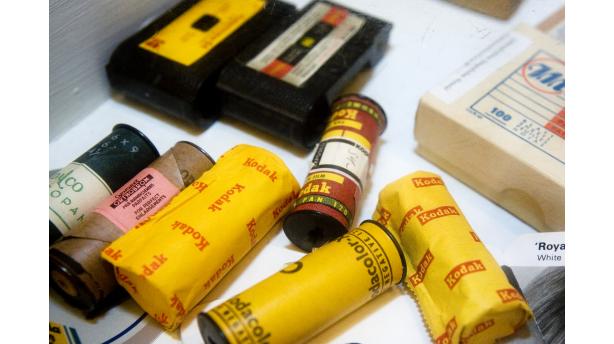Museum A-Ö » Hägglund’s Photography Museum
Hägglund’s Photography Museum



Did you know...
There is also a movie projector in the museum. The emigrants could sometimes bring films with them from the United States.
Hägglund’s Photography Museum was inaugurated in 2000, and it is founded upon photographer Erik Hägglund’s studio. The wide collection of cameras and the studio’s equipment illustrate the history of photography from the 1910s to the present day.
Erik Hägglund from Rökiö was interested in art already at an early age, and he travelled to Sweden to work as the apprentice of a painter. There he was employed in a studio and his interest in photography was aroused. When he returned to his home region, he established a modest studio in a stave shed in 1910. He constructed his first atelier camera himself and also painted the shooting background himself. Those are both displayed in the replica of the workshop built inside the museum.Hägglund was one of the first people to bring photographing to the Ostrobothnia countryside. He photographed life in the region for 50 years and toured around with a camera and stand attached to the rack of his bike. His long career produced 35 000 glass negatives, which were donated to the Swedish Literature Society in 1972. Nowadays they are stored in the collection of the Ostrobothnian Heritage Archive. It has been said, that the pictures represent Finland in miniature size. In the museum’s theme exhibitions are displayed diverse themes, for instance a christening, a funeral, the environment and houses of the region, labour, festivities and union life.
In the vitrines are exposed around hundred different kinds of cameras, from the box cameras of the early 20th century to the modern digital cameras. Hägglund acquired his first purchased camera from an American immigrant. A small darkroom has been built inside the museum. Photographs were retouched i.e. improved already in the beginning of the 20th century, and in the museum it is illustrated, how it was done with the help of a pencil and strong lamps.
Hägglund’s interest in art endured all his life, and he also painted pictures especially during the war time, when it was difficult to obtain equipment for photography and decent paper. Some of the paintings are displayed in the museum. Art exhibitions are also arranged in the area during the summer.
Hägglund’s Photography Museum is located on the second floor of the mill cottage on the Rökiö mill area. The mill was built in 1920, and it was mainly used for grinding barley and oat flour for animal feed. The glory days of the mill were during the war time and immediately after it, when it employed nine men in three shifts. The mill was closed down in the middle of the 1980s, and the Rökiö Library Association has developed it into a centre for village activity and tourism.


